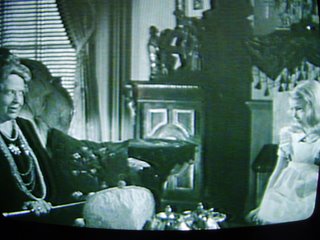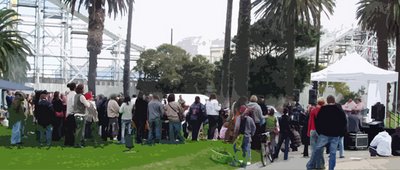The old weed fascination is back...

This photo was taken from my back garden and the large prickly pear cactus in the background belongs to my neighbour, Peter Marino. One of my earliest memories of trying to get rid of weeds was when I was about 8 or 9. Mucking around with my best friend, we decided to pull down one of these huge cacti in her front yard. We had heard people call it a weed so we thought we were doing her mum a favour when we somehow chopped it into little pieces. Of course what we didn't know was that all these little pieces were capable of generating individual prickly pears and we had created a mini nightmare. I cannot remember what happened after a vague recollection of my friend's mum getting mad at us.
Anyway since then I have been slightly in awe of these plants. On my one and only visit to Arizona a few years ago I saw these plants in their native environment. It made me look at them in a different way and I quite like this very naughty big weed that lives next door to me now!
Some prickly pear facts thanks to the Website-www.northwestweeds.nsw.gov.au/prickly_pear_history.htm
The very first plants of prickly pear were brought into Australia on the First Fleet. Captain Arthur Phillip collected a number of COCHINEAL-INFESTED plants from Brazil on his way to establish the first white settlement at Botany Bay.
Prickly pear first came to New South Wales with the First Fleet. It was to be used to establish a cochineal dye Industries... The photo on the left shows young cochineal insects feeding on a pad of prickly pear. The adults grow to about the size of a "match head" and when squashed produce red colouring.
At that time, Spain and Portugal had a world-wide monopoly on the important cochineal dye Industries and the British Government was keen to set up its own source of supply within its dominion. The red dye derived from cochineal insects was important to the western world's clothing and garment Industries. It was the dye used to colour the British soldiers' red coats, for example.
It was at the instigation of Sir Joseph Banks that a cochineal dye Industries was established at Botany Bay. Little is known of the fate of those first plants introduced by Captain Phillip, but it has been established that the variety of prickly pear was "smooth tree pear" (Opuntia vulgaris). This type of cactus is still found along coastal areas of New South Wales. It never developed into a major problem.
"Common pest pear" (Opuntia stricta spp.) was the variety of prickly pear that overran NSW and Qld between 1900 and 1930.
The Spread of Prickly Pear in Australia
There is no information on the original introduction of common pest pear into Australia from the Americas. It was first recorded as being cultivated for stock fodder in the Parramatta district in the early 1800's. There is also a record of a pot plant being taken to Scone, NSW in 1839 where it was grown in a station garden. The property manager later planted it in various paddocks with the idea that it would be a good stand-by for stock in a drought year.
It has also been recorded that a plant of common pear was taken from Sydney to Warwick, Queensland in 1848 for use as a garden plant, with a strong recommendation that it would be a good fruiting and hedge plant!
From garden plants to hedges and then into the paddock, prickly pear became acclimatised and spread at an alarming rate. Many people were forced off their lands.
Early settlers took plants to other parts of New South Wales and Queensland because of its potential use as an alternate food source for stock, especially during dry times. It was also planted at various homesteads as a hedge. The hedges flourished and bore fruit. Excess pieces were dumped in the bush. With all this help, prickly pear quickly established over a large area.
Prickly pear literally exploded! The accommodating climate and the general lack of natural enemies accounted for its amazing spread - still considered by many experts to be one of the botanical wonders of the world.













